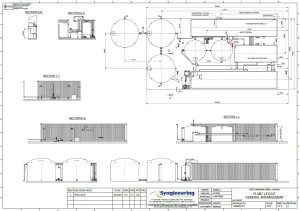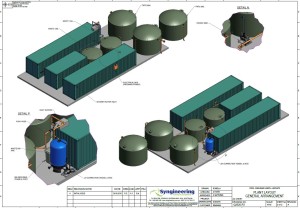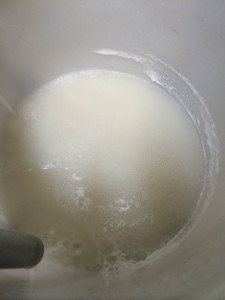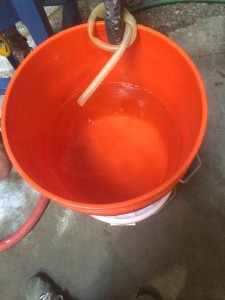Archive for the ‘Water Treatment’ Category
Sunday, September 4th, 2016
Syngineering have been hard at work developing a range of containerised Membrane Bio Reactors (MBR) and Moving Bed Bio Reactor (MBBR) systems suitable for treating a wide range of waste water that includes sewage treatment, land fill leachate, effluent treatment and many more. These systems are fully containerised and range in size from 10KL/day through to many mega litres per day. The advantage of the Syngineering systems are that they come standard with Reverse Osmosis or RO filtration meaning that they will produce permeate that complies with Australian and New Zealand drinking water guidelines.

Typical MBR plant design from Syngineering

Typical MBR and MBBR Waste Water treatment plant layout by Syngineering
Contact Syngineering for more information or to arrange an MBR or MBBR trial today
P: +61 7 3865 6603
W: www.syngineering.com.au
E: info@syngineering.com.au
Category Water Treatment | Tags: Tags: effluent treatment, engineering design, Landfill leachate, MBR, Membrane bio reactor, Membrane technology, Moving Bed Bio Reactor, plant design, SBR, Sequenced Bio Reactors, sewage treatment plant design, water treatment,
Tuesday, March 1st, 2016
The City of Buga in Colombia has a small landfill that serves the entire city. There was only a very small space left for putting trash and the projection was that it would run out of space in about 4 months. The Presidente Landfill asked authorities to open a new area on its property for trash disposal. The regulators told them that in order to give them a permit, they must install equipment to treat the landfill leachate. In addition, the existing storage ponds for leachate were nearly at capacity. Production of more Leachate would have required construction of more storage ponds.
A gas to energy project is also planned for this site. The first phase would be gas extraction with flares to burn the gas. The next phase would be installation of electrical gas-fired generators to make electricity. Prior to getting permitting for this project, leachate treatment was also required. While the trash in the landfill needs to be moist so that bacteria can convert organics to methane, there cannot be too much liquid (leachate) in the trash or the rate of gas extraction would be impaired.
Process Description
A full –scale VSEP system was installed at this site using three of the large 84” VSEP modules. Since the filtrate would be used for land irrigation, only a single pass with RO was required. Other VSEP installations would also include a second stage RO spiral polishing system to make water that would meet surface water discharge requirements. But in this case, Ammonia, COD, and other contaminants were sufficiently removed with just one pass through the VSEP RO system.
For more information click Syngineering – Buga Columbia Landfill Leachate
Monday, March 16th, 2015
Reverse Osmosis (RO) is an effective method for the treatment of a range of contaminated water. However for every litre of treated water you will have about a half litre of waste water or RO reject. When you are talking about treating volumes on the order of multiple megalitres a day then we are talking about a lot of RO reject water to deal with.
In many cases this RO reject is stored in holding ponds to evaporate. However with a VSEP system it is possible to continue to treat the RO reject water. The images below show the RO reject used as feed water input into the VSEP and the filtrate output from the VSEP.
| Before – RO Reject |
|
After – Crystal Clear Filtrate |
 |
|
 |
Tuesday, February 3rd, 2015
VSEP systems use membranes which are made from various thin film composites and polymers such as polyether sulfone and polyamide. There are over 200 different membrane types being used throughout the VSEP systems. Continue reading “VSEP’s Membrane Technology” »
Monday, February 2nd, 2015
There are a range of available separation technologies for separating liquid from both suspended solids and dissolved substances. Some of the more common approaches include:
- Centrifuges
- Clarifiers
- Evaporators
- Rotary Drum Vacuum Filters
- Pressure Filters
Continue reading “The Benefits of VSEP” »




